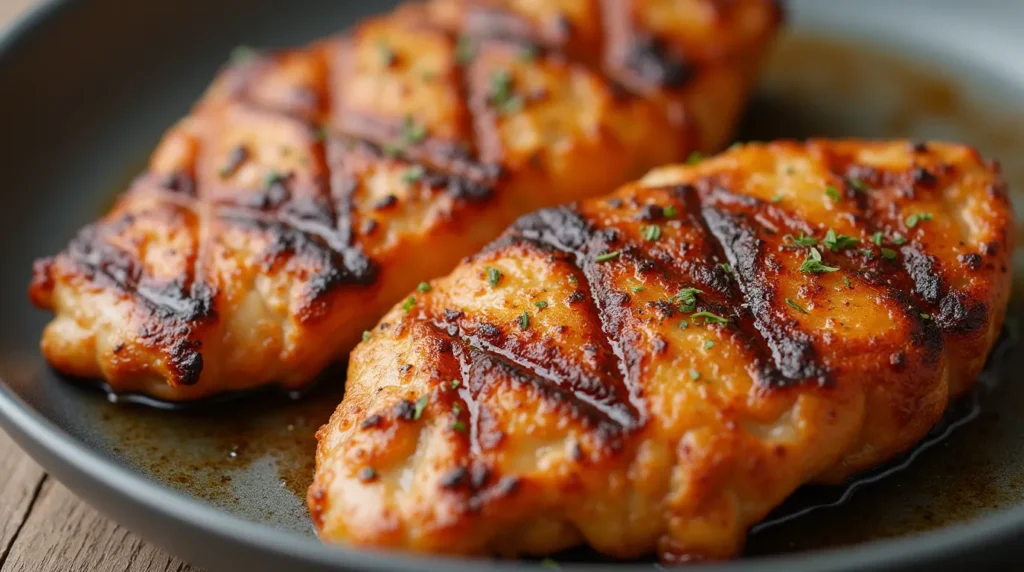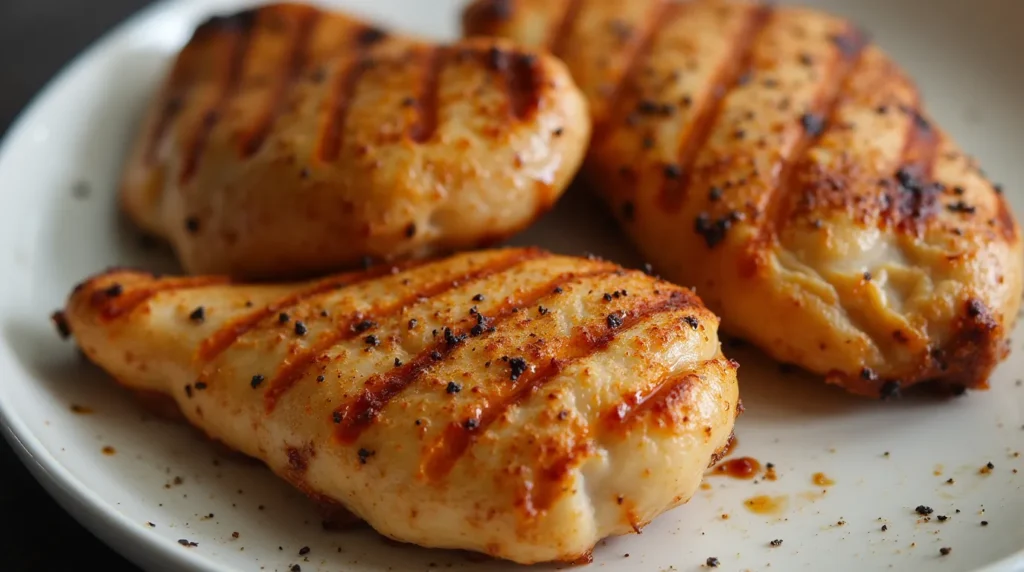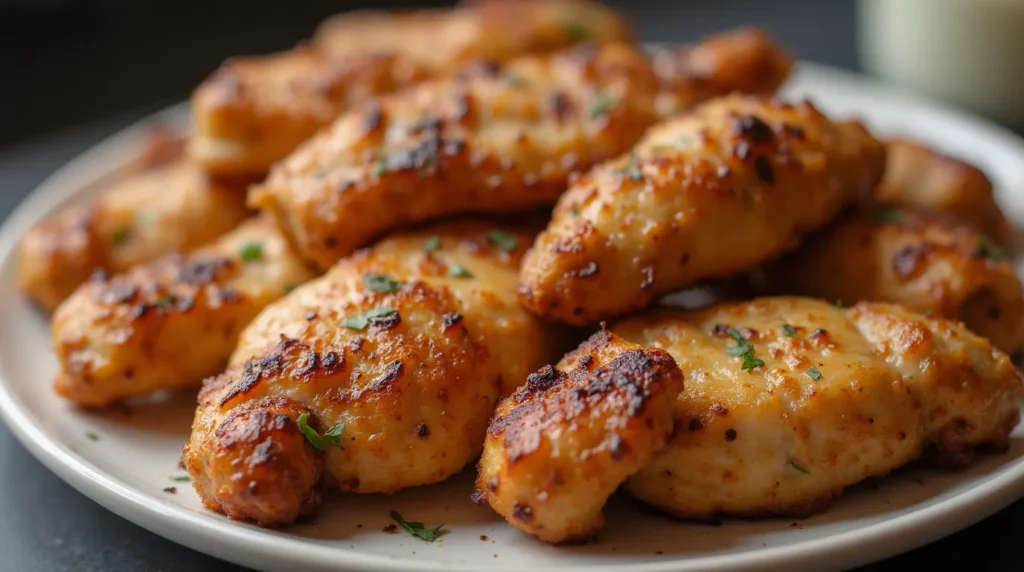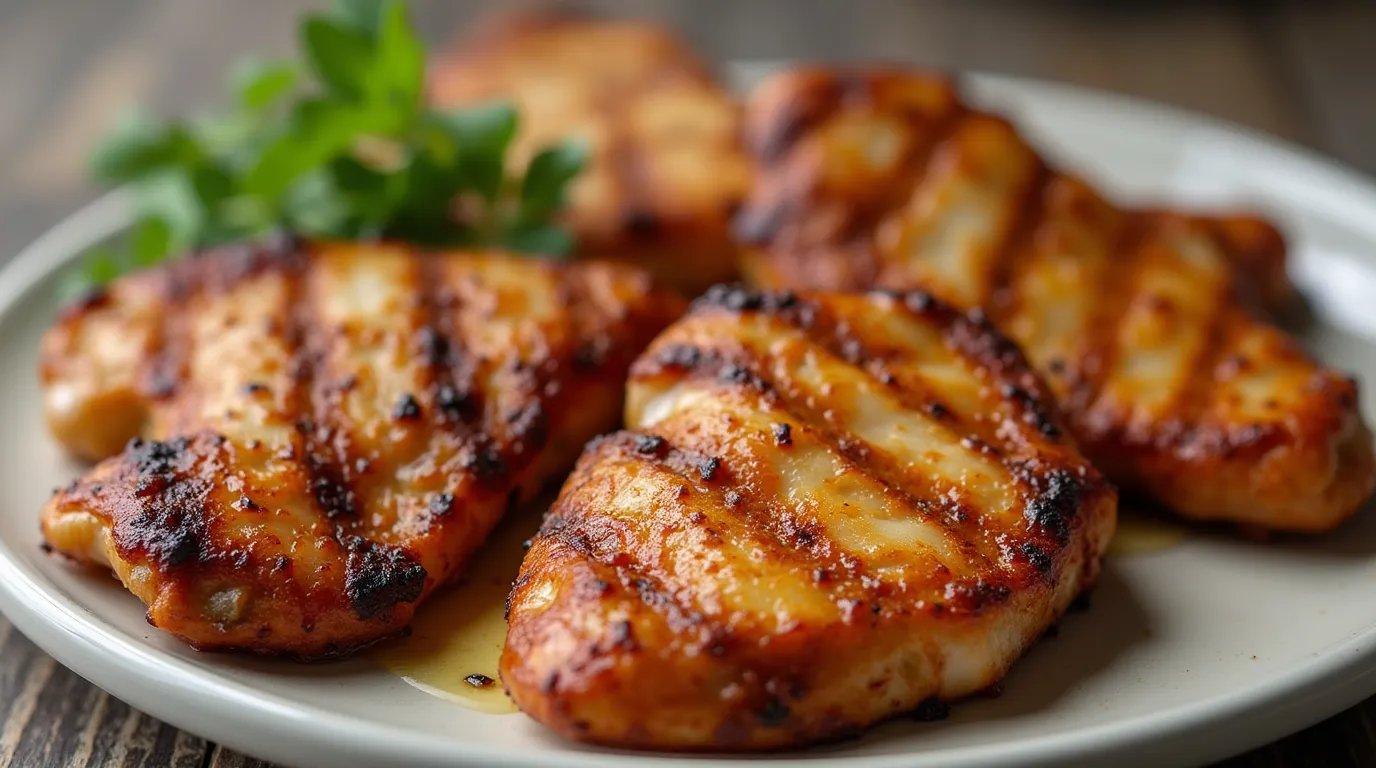Few culinary experiences compare to biting into perfectly grilled chicken with crispy, golden skin. It’s a harmonious blend of textures: the crunch of the skin followed by tender, juicy meat. Achieving this perfection might seem daunting, but with the right approach, you can master it at home.
Wondering How to get crispy skin on grilled chicken? This guide will walk you through everything you need to know to consistently grill chicken with irresistibly crispy skin, from preparation to grilling techniques and expert tips.
Why Crispy Chicken Skin is Worth the Effort
Grilled chicken skin done right isn’t just delicious; it elevates the entire dish. Here’s why it’s a must-have:
1. Packed with Flavor
The skin seals in juices, creating a self-basting effect during grilling. Add seasoning and fat rendering to the mix, and you’ve got a flavor explosion.
2. Textural Perfection
Without crispy skin, grilled chicken can feel incomplete. That crunch adds contrast to the tender meat, making every bite memorable.
3. Guilt-Free Indulgence
When fat renders out during grilling, what’s left is crispy skin with much of the excess fat removed. This makes it a lighter treat compared to fried alternatives.

The Science Behind Crispy Chicken Skin
Grilling chicken with crispy skin isn’t just an art; it’s science. Understanding the process helps you avoid common pitfalls.
Moisture is the Enemy
Crispiness requires dry skin. If moisture lingers on the surface, it creates steam instead of crunch. Drying the chicken properly before grilling is non-negotiable.
Fat is the Secret Weapon
As the chicken grills, the fat beneath the skin renders, basting the meat and crisping the skin. However, if the fat doesn’t render fully, the skin will remain rubbery.
Temperature is Key
High heat is essential for crispy skin. Too low, and the skin cooks unevenly; too high, and you risk burning it before the chicken is fully cooked.
How to get crispy skin on grilled chicken?
Prepping Your Chicken for Success
Preparation is where the magic begins. Set yourself up for crispy perfection by focusing on these steps.
1. Choosing the Right Chicken
- Bone-in, Skin-on Pieces: The bones help the chicken stay moist, while the skin provides the canvas for crispiness.
- Fresh vs. Frozen: Fresh chicken is ideal since frozen tends to retain excess water, which can hinder crisping.
2. Pat Dry the Skin
Moisture is the main obstacle to crispy skin. Use paper towels to thoroughly dry the chicken, paying attention to every crevice. For best results, air-dry the chicken uncovered in the fridge for 2-4 hours.
3. Season Generously
Salt is your best friend. It not only enhances flavor but also helps draw out remaining moisture from the skin. For an extra edge, mix baking powder into your seasoning. Baking powder increases browning and enhances crispiness by altering the skin’s pH balance.
The Grilling Process for Crispy Skin
Once your chicken is prepped, it’s time to grill like a pro. Follow these steps to nail the grilling process:
1. Preheat Your Grill
- Heat your grill to medium-high (375–400°F).
- Set up a two-zone cooking area: direct heat for crisping and indirect heat for cooking the chicken through.
2. Start Skin-Side Down
Place the chicken skin-side down over the direct heat zone for 3-5 minutes. This helps jumpstart the crisping process.
3. Move to Indirect Heat
Transfer the chicken to the indirect heat zone and close the grill lid. Cook until the internal temperature of the thickest part of the meat reaches 165°F. Use a meat thermometer for accuracy.
4. Finish with a Final Crisp
To lock in the crunch, move the chicken back to the direct heat zone for 1-2 minutes, flipping as needed to ensure even browning.
Grilling Tips for Best Results
- Oil the Grates: Prevent sticking by brushing your grill grates with oil before placing the chicken.
- Don’t Overcrowd: Leave space between pieces to allow proper airflow and even cooking.
- Monitor Heat Closely: Keep the grill lid closed when not flipping to maintain steady heat.

Tools and Ingredients You’ll Need
Having the right tools and ingredients makes a huge difference. Here’s a quick guide:
Essential Tools
- Grill Thermometer: Ensures accurate temperature control.
- Wire Brush: Keeps grill grates clean, preventing sticking.
- Tongs: Makes flipping chicken easier and safer.
Key Ingredients
| Ingredient | Purpose |
|---|---|
| Chicken (bone-in, skin-on) | The base for crispy skin perfection |
| Kosher Salt | Draws out moisture |
| Baking Powder | Boosts browning and crunch |
| Olive Oil | Helps with non-stick grilling |
| Seasoning Blend | Adds depth of flavor |
Avoid These Common Mistakes
Even small missteps can affect your results. Here are the most common pitfalls and how to avoid them:
1. Skipping the Drying Step
Neglecting to dry the chicken skin thoroughly almost guarantees soggy results. Always dry the skin before grilling.
2. Grilling at the Wrong Temperature
Cooking over heat that’s too low won’t allow the fat to render properly, while heat that’s too high risks burning the skin.
3. Flipping Too Often
Constant flipping interrupts the cooking process and can tear the skin. Let each side cook fully before turning.
Bonus Tips for Extra Crispy Skin
Want to take your crispy chicken game to the next level? These pro tips will help:
- Lightly Brush with Oil: Applying a thin coat of oil before grilling can enhance browning and crispiness.
- Add Smoke: Toss soaked wood chips onto the grill for a smoky flavor that complements the crunch.
- Rest After Grilling: Let the chicken rest for 5-10 minutes after removing it from the grill. This redistributes juices and preserves the crispy texture.

FAQ: Everything You Need to Know About Crispy Chicken Skin
1. How do I keep chicken from sticking to the grill?
Preheat the grill and oil the grates lightly before placing the chicken. This creates a barrier that reduces sticking.
2. Can I use a gas grill instead of charcoal?
Yes! Gas grills work just as well as charcoal. The key is maintaining a consistent medium-high heat.
3. What’s the best way to reheat grilled chicken without losing crispiness?
Reheat in an oven at 375°F. Place the chicken on a wire rack to allow airflow, which helps preserve the crispy skin.
4. Can I use skinless chicken for grilling?
While you can grill skinless chicken, you won’t achieve the same crispy results. Consider marinating skinless cuts for added flavor instead.
Conclusion: Master Crispy Skin Chicken Today
Grilling chicken with crispy skin is both an art and a science, but it’s one that’s entirely within your reach. By understanding the importance of preparation, using the right tools, and mastering key grilling techniques, you’ll transform simple chicken into a dish that’s bursting with flavor and texture.
Now it’s your turn to take these tips to the grill. Whether it’s for a family dinner or your next backyard barbecue, crispy skin chicken is sure to impress. Don’t forget to share your results, tips, or even questions in the comments below. Let’s grill together and create something unforgettable!

